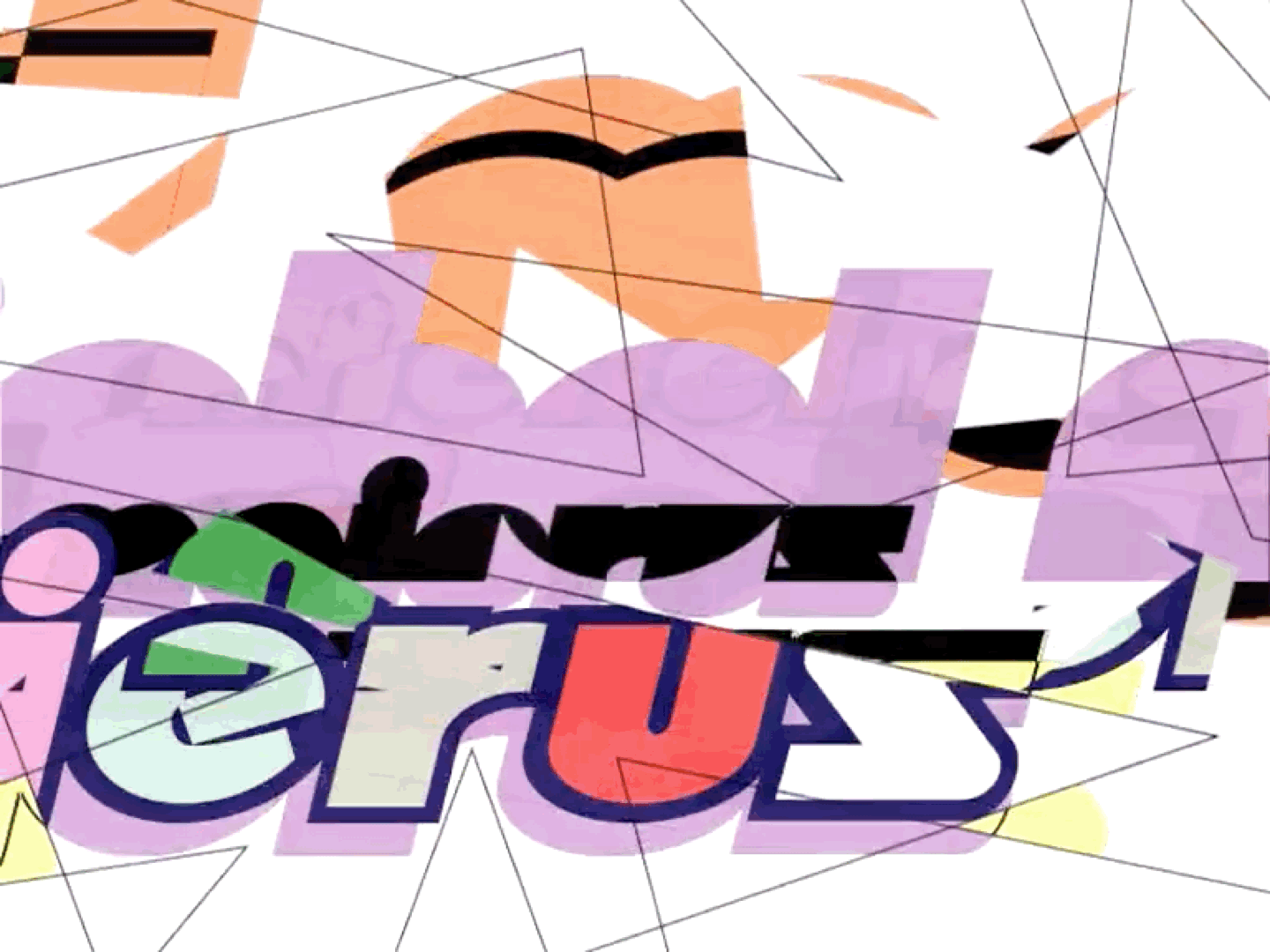ART CITIES: Berlin-Michel Majerus
 Michel Majerus’ visual language freely samples from art history and popular culture, redeploying canonized styles and genres alongside graphics borrowed from youth subcultures and the commercial mainstream. Often combining painting with large-scale installations, Majerus’s complex pictorial worlds include quotations from artists like de Kooning, Warhol, and Basquiat, as well as song lyrics, brand logos, video games, cartoons, and magazine covers.
Michel Majerus’ visual language freely samples from art history and popular culture, redeploying canonized styles and genres alongside graphics borrowed from youth subcultures and the commercial mainstream. Often combining painting with large-scale installations, Majerus’s complex pictorial worlds include quotations from artists like de Kooning, Warhol, and Basquiat, as well as song lyrics, brand logos, video games, cartoons, and magazine covers.
By Efi Michalarou
KW Institute for Contemporary Art Archive
The exhibition “Early Works” seeks to uncover the earliest layers of Michel Majerus’ artistic practice by showing works he produced between 1990 and 1996. Many of these pieces are on public view for the first time. The exhibition is dedicated to the beginnings of Majerus’ nationally and internationally celebrated work. Majerus’ artistic approach is already apparent in the early works created during his studies. These explore visual culture, time, speed and seriality as well as virtual and physical space. The artist’s continuous observations of surface and space as well as his inquiries into materials and techniques were essential to his methodological way of illuminating how images are produced. This investigation formed the foundations of his reflections on the meaning and power of visual culture. On its ground floor and main hall KW shows over 80 pieces from the artist’s early works set in a site-specific exhibition architecture. Fragments of scaffolding will recall Majerus’ first institutional solo show at the Kunsthalle Basel in 1996, wherein the artist created a scenography that integrated viewers into its visual space. This practice allowed Majerus to initiate a new and critical confrontation with the continuous hybridization of visual culture, and simultaneously disclosed the impossibility to escape the ever growing, pervasive presence of images and virtual space in the fabric of our daily life. The exhibition allows us to realize how very early on in his career the young artist developed the self-confidence and insouciance that distinguished his later work. Even his early pieces are in the unusually large format that became typical of his work afterward. Majerus’s approach to painting is influenced by images outside of the fine arts, such as comics, advertising, pornography, or music videos, and yet one can also see the influence of acknowledged artists such Gerhard Richter, Georg Baselitz, and others. His paintings feature characters from computer games, such as Super Mario, but they also contain expressive brushwork that recalls the paintings of Willem de Kooning. Majerus regarded the popular iconography of the 1990s, with its logos, symbols, and codes, as a signal, just as he saw and freely utilized various types of artistic styles as a signal. He did not shy away from referring to stars of the New York art scenes of the 1960s, 1970s, and 1980s, such as Andy Warhol, Jean-Michel Basquiat, Willem de Kooning, and Frank Stella. For Majerus, existing pictures, regardless of their background, offer chances to re-paint them. With this, he dismisses as unnecessary the classic notion of the artist inventing images, while at the same time giving them irony. Simultaneously, by harkening back to them, he reflects upon his relationship to paintings produced by others. Of course, artistic techniques such as adaption, citation, allusion, distortion, and appropriation, including the special selection of appropriated images and the conditions under which the selections are made, have always been part of art’s relationship to the “real” world, but in the late 1980s, as digitally produced images arose, the relevance of these techniques was that they were an active means of confronting these digitally created pictures. Very early on, Majerus was enthused over the possibilities of Photoshop, of scaling images, and of other techniques. Michel Majerus was born in 1967 in Esch-sur-Alzette in Luxembourg. From 1986 to 1992 he studied painting at the Staatliche Akademie der Bildenden Künste Stuttgart under teachers such as K.R.H. Sonderburg and Joseph Kosuth. Even this choice of professors (one, an expressive and gestural painter, the other a Conceptual Art star) is evidence of the freedom with which Majerus approached an extremely wide range of artistic modes of expression. After graduating he moved to Berlin, where he worked for the rest of his life, with the exception of a year-long sojourn in Los Angeles in 2001. Majerus became internationally famous in 1998 with his contribution to the Manifesta 2 in Luxembourg. In 1999 Harald Szeemann invited Majerus to design the exterior façade of the Italian Pavilion at the Venice Biennial. He created a text/image collage titled “Sun in 10 Different Directions”. With his work “If We Are Dead, So It Is” a 455 square meter half pipe which he painted in 2000 for an exhibition at the Cologne Kunstverein, Majerus succeeded in shifting into three-dimensionality. On 6/11/2002, Michel Majerus died in a plane crash at the age of 35 over Luxembourg, the city where he was born.
Photo: Michel Majerus, 10 bears masturbating in 10 boxes, 1992, © Michel Majerus Estate, 2022. Courtesy neugerriemschneider, Berlin and Matthew Marks Gallery. Photo: Jens Ziehe, Berlin
Info: Curator: Krist Gruijthuijsen, Assistant Curator: Léon Kruijswijk, KW Institute for Contemporary Art , Auguststraße 69, Berlin, Germany, Duration: 21/10/2022-15/1/2023, Days & Hours: Mon, Wed & Fri-Sun 11:00-19:00, Thu 11:00-21:00, www.kw-berlin.de/

Right: Michel Majerus, Ohne Titel, 1991, © Michel Majerus Estate, 2022. Courtesy neugerriemschneider, Berlin and Matthew Marks Gallery. Photo: Jens Ziehe, Berlin

